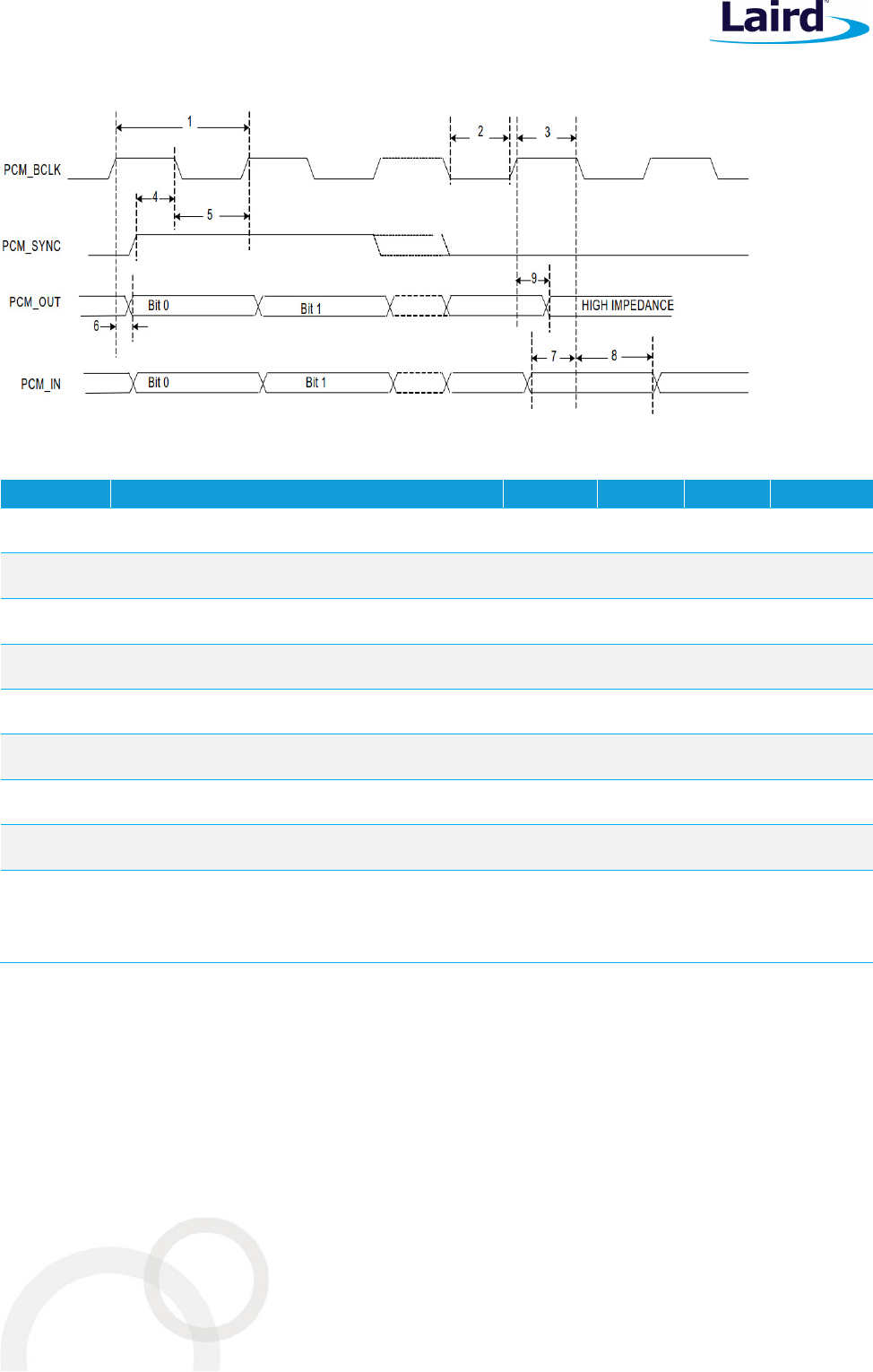User's Manual

BT860
Datasheet
Embedded Wireless Solutions Support Center:
http://ews-support.lairdtech.com
www.lairdtech.com/bluetooth
15
© Copyright 2017 Laird. All Rights Reserved
Americas: +1-800-492-2320
Europe: +44-1628-858-940
Hong Kong: +852 2923 0610
Figure 6 and Table 14 shows PCM Timing Diagram and Specifications for the slave mode of long-frame
Figure 6: PCM timing diagram (Long-Frame Sync, Slave Mode)
Table 14: PCM Interface timing specifications (Long-Frame Sync, Slave Mode)
Reference
Characteristics Min. Typ. Max. Unit
1
PCM bit clock frequency
- - 12 MHz
2
PCM bit clock LOW
41 - - ns
3
PCM bit clock HIGH
41 - - ns
4
PCM_SYNC setup
8 - - ns
5
PCM_SYNC_hold
8 - - ns
6
PCM_OUT delay
0 - 25 ns
7
PCM_IN setup
8 - - ns
8
PCM_IN hold
8 - - ns
9
Delay from rising edge of PCM_BCLK during last
bit period to PCM_OUT becoming high
impedance
0 - 25 ns
8.3.3.
Data Formatting
The BT860 may be configured to generate and accept several different data formats. For conventional
narrowband speech mode, the BT860 uses 13 of the 16 bits in each PCM frame. The location and order of these
13 bits can be configured to support various data formats on the PCM interface. The remaining three bits are
ignored on the input and may be filled with 0s, 1s, a sign bit, or a programmed value on the output. The default
format is 13-bit 2’s complement data, left justified, and clocked MSB first.










